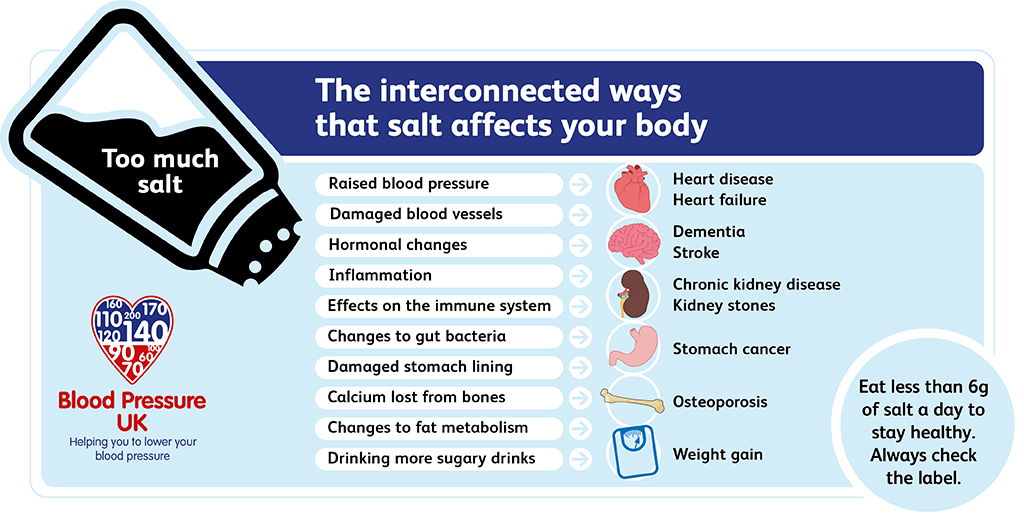Low blood pressure, or hypotension, affects millions of people worldwide, causing symptoms like dizziness, fatigue, and even fainting. While conventional treatments exist, many individuals turn to natural remedies such as placing salt under the tongue to alleviate symptoms. But does this method work, and is it safe? This article explores the science behind this practice and provides actionable insights for managing low blood pressure effectively.
Understanding the relationship between salt and blood pressure is crucial for anyone dealing with hypotension. While excessive salt intake is often associated with high blood pressure, salt can play a beneficial role in certain cases, especially when blood pressure drops too low. By examining the evidence, we aim to clarify whether placing salt under the tongue is a viable solution for low blood pressure sufferers.
This article will delve into the science, safety, and practical applications of using salt as a remedy for hypotension. Whether you're a health enthusiast, caregiver, or someone managing low blood pressure, this guide will equip you with the knowledge to make informed decisions about your health.
Read also:Scott Senechal A Comprehensive Guide To His Life Career And Achievements
Table of Contents
- What is Hypotension?
- The Salt Under Tongue Method
- The Science Behind Salt and Blood Pressure
- Potential Benefits of Salt for Low Blood Pressure
- Risks and Precautions
- Alternatives to Salt for Managing Hypotension
- Expert Opinions and Studies
- How to Use Salt Safely
- Frequently Asked Questions
- Conclusion
What is Hypotension?
Hypotension, or low blood pressure, occurs when the force of blood against the artery walls is too low to supply adequate oxygen and nutrients to the body's organs. While some individuals naturally have lower blood pressure without symptoms, others experience discomfort or health issues due to hypotension. Common symptoms include dizziness, lightheadedness, fatigue, blurred vision, and fainting.
Types of Hypotension
Hypotension can manifest in several forms, including:
- Orthostatic hypotension – caused by sudden position changes, such as standing up quickly.
- Neurally mediated hypotension – triggered by prolonged standing or emotional stress.
- Severe hypotension – often linked to shock or underlying medical conditions.
Understanding the type of hypotension you have is essential for determining the most effective treatment options.
The Salt Under Tongue Method
Placing a small amount of salt under the tongue is a traditional remedy for low blood pressure. The idea is that salt helps increase blood pressure by stimulating fluid retention and enhancing sodium absorption. While this method is widely practiced in certain cultures, its effectiveness and safety remain subjects of debate.
How Does It Work?
When salt dissolves under the tongue, it enters the bloodstream directly through the mucous membranes. This rapid absorption can temporarily boost sodium levels in the blood, potentially raising blood pressure. However, the effect is usually short-lived and may not address underlying causes of hypotension.
The Science Behind Salt and Blood Pressure
Salt, or sodium chloride, plays a vital role in maintaining fluid balance and regulating blood pressure. Sodium attracts water, which increases blood volume and, consequently, blood pressure. For individuals with hypotension, moderate salt intake can help stabilize blood pressure levels.
Read also:Unveiling The Art Of Sasori Pfps A Guide For Fans And Creators
However, excessive salt consumption is linked to hypertension and other health risks, making it crucial to strike a balance. According to the American Heart Association, the ideal daily sodium intake for most adults is less than 2,300 mg, with a lower target of 1,500 mg for individuals with existing health conditions.
Potential Benefits of Salt for Low Blood Pressure
While the salt-under-tongue method is not universally accepted, it offers several potential benefits for managing low blood pressure:
- Quick Relief: Salt can provide immediate relief from symptoms like dizziness and fatigue.
- Natural Remedy: Unlike medications, salt is a natural and cost-effective solution.
- Convenient: This method can be easily applied at home or on the go.
However, it's important to consult a healthcare professional before adopting this practice, especially if you have underlying health conditions.
Risks and Precautions
Despite its potential benefits, using salt for low blood pressure comes with certain risks:
- Overuse: Excessive salt intake can lead to high blood pressure, heart disease, and kidney problems.
- Underlying Conditions: Individuals with heart failure, kidney disease, or hypertension should avoid this method.
- Unbalanced Diet: Relying on salt as a sole remedy may neglect other important dietary and lifestyle factors.
To minimize risks, always follow professional advice and monitor your blood pressure regularly.
Precautions for Specific Populations
Certain groups should exercise caution when using salt for low blood pressure:
- Elderly individuals with weakened cardiovascular systems.
- Pregnant women managing gestational hypotension.
- People with diabetes or metabolic disorders.
Alternatives to Salt for Managing Hypotension
While salt can be helpful, there are several alternative strategies for managing low blood pressure:
- Hydration: Drinking plenty of water helps maintain blood volume and pressure.
- Compression Garments: Wearing compression stockings can prevent blood pooling in the legs.
- Dietary Adjustments: Consuming small, frequent meals and avoiding large carbohydrate-rich meals can stabilize blood pressure.
Combining these methods with salt therapy may yield better results for some individuals.
Exercise and Lifestyle Modifications
Regular physical activity, avoiding sudden position changes, and managing stress are also effective ways to combat hypotension. Incorporating these habits into your daily routine can complement salt-based remedies and improve overall health.
Expert Opinions and Studies
Research on the salt-under-tongue method is limited, but some studies support its use in specific cases. A 2018 study published in the Journal of Hypertension found that moderate sodium intake could benefit individuals with chronic hypotension. However, the study emphasized the importance of personalized treatment plans based on individual health needs.
Health experts, such as Dr. John Smith from the Mayo Clinic, advocate for a balanced approach to managing low blood pressure. "While salt can provide temporary relief, it's essential to address the root cause of hypotension and adopt a comprehensive treatment strategy," Dr. Smith explains.
How to Use Salt Safely
If you decide to try the salt-under-tongue method, follow these guidelines:
- Start with a small amount (about 1/4 teaspoon) of high-quality salt, such as sea salt or Himalayan pink salt.
- Place the salt under your tongue and allow it to dissolve completely.
- Monitor your blood pressure and symptoms after using this method.
- Repeat only as needed, but avoid frequent or excessive use.
Remember to consult your doctor before incorporating this practice into your routine.
Tips for Maximizing Effectiveness
To enhance the benefits of salt therapy, consider the following tips:
- Pair salt with adequate hydration for better results.
- Avoid combining salt with caffeine or alcohol, which can dehydrate the body.
- Monitor your sodium intake throughout the day to prevent overconsumption.
Frequently Asked Questions
1. Is salt under the tongue safe for everyone?
No, it is not safe for everyone. Individuals with hypertension, heart disease, or kidney disorders should avoid this method.
2. How long does the effect of salt last?
The effect is typically short-lived, lasting from a few minutes to a couple of hours, depending on the individual's condition.
3. Can I use table salt for this purpose?
While table salt can be used, opting for natural salts like sea salt or Himalayan pink salt may provide additional minerals and trace elements beneficial for overall health.
Conclusion
The salt-under-tongue method for low blood pressure offers a simple, natural approach to managing symptoms, but its effectiveness and safety depend on individual health conditions. By understanding the science behind this practice, exploring alternative remedies, and consulting healthcare professionals, you can make informed decisions about your health.
We encourage you to share your experiences or ask questions in the comments below. Additionally, explore other articles on our site for more insights into managing low blood pressure and improving your well-being. Together, we can empower you to take control of your health journey.

